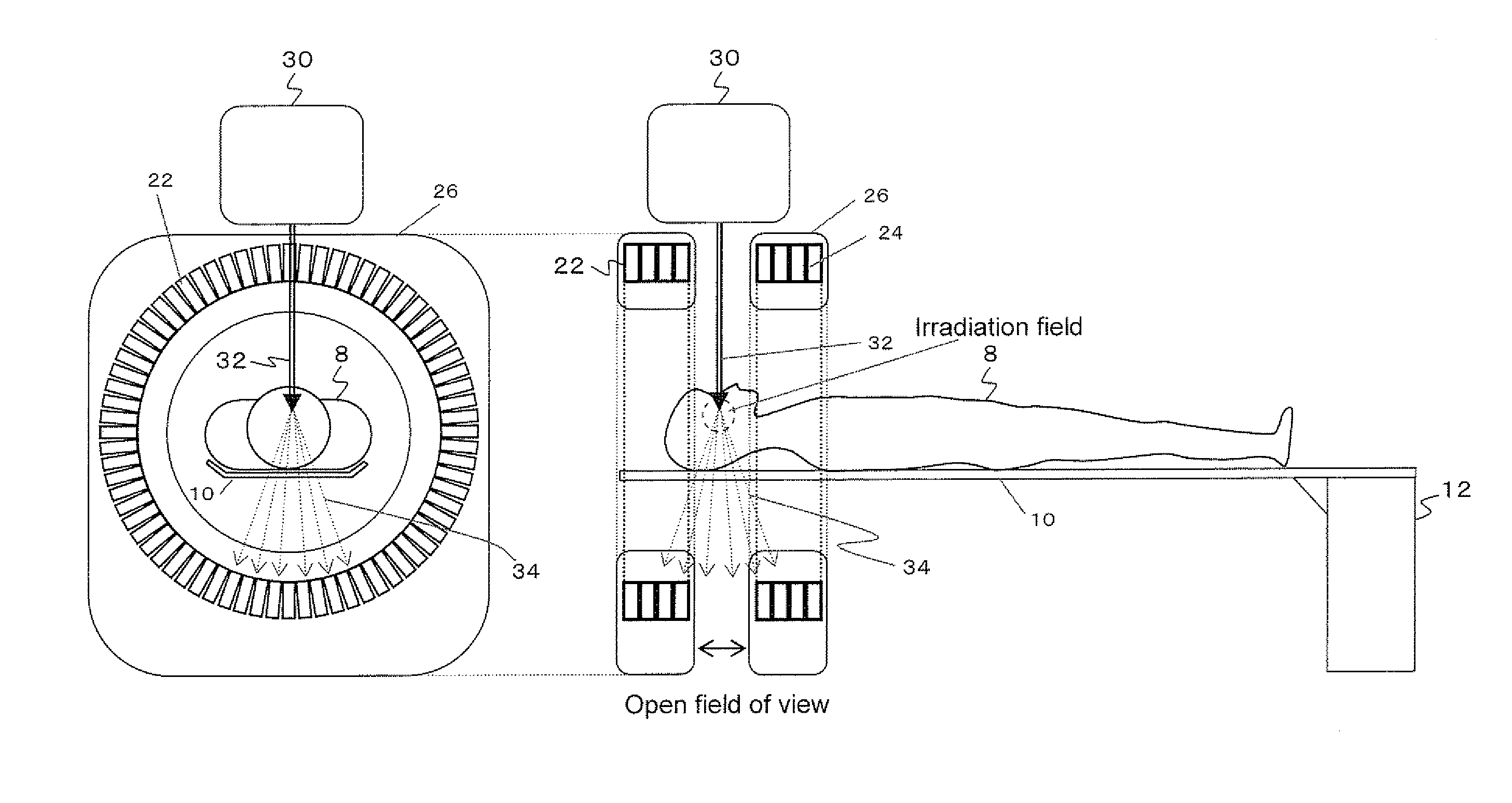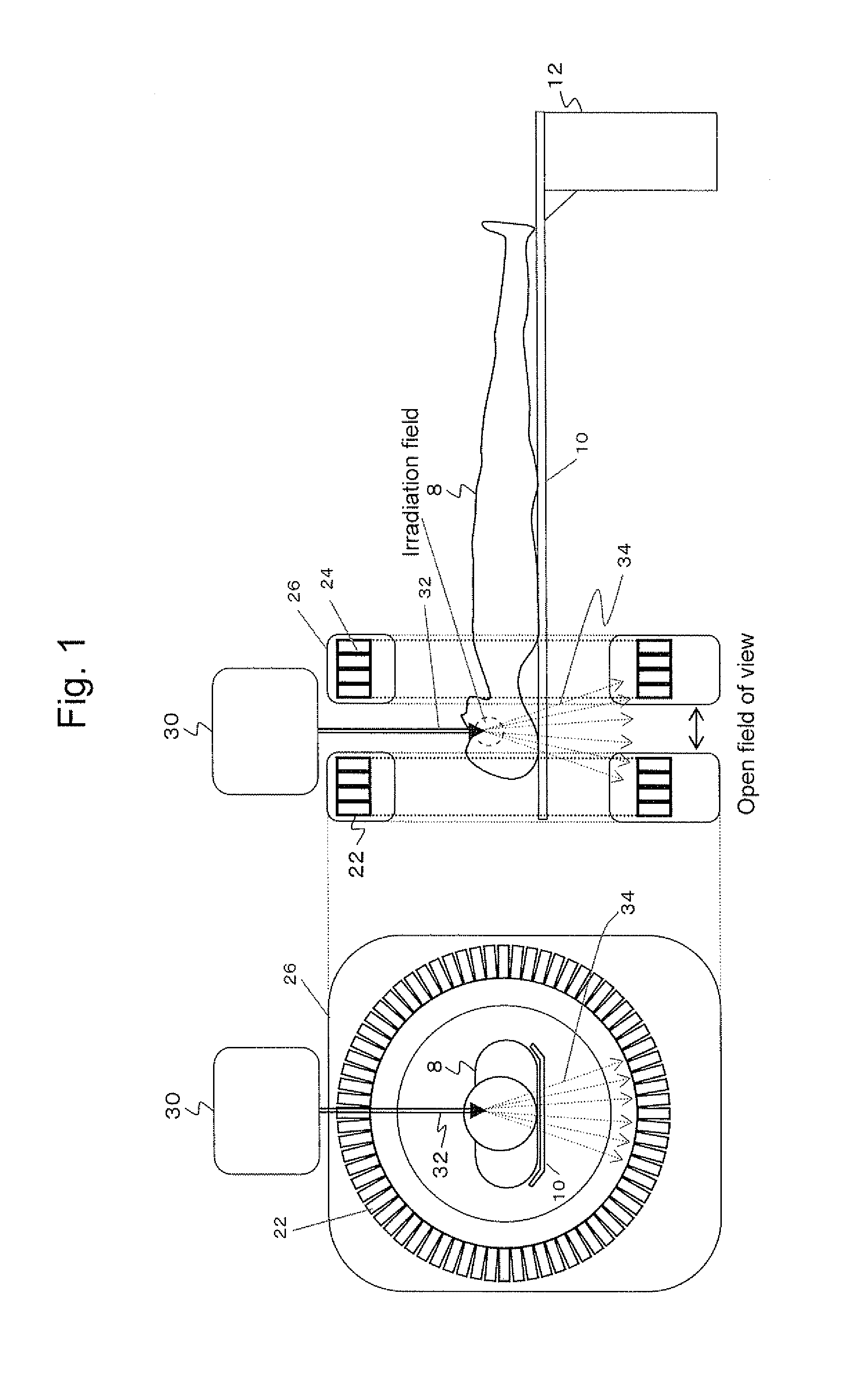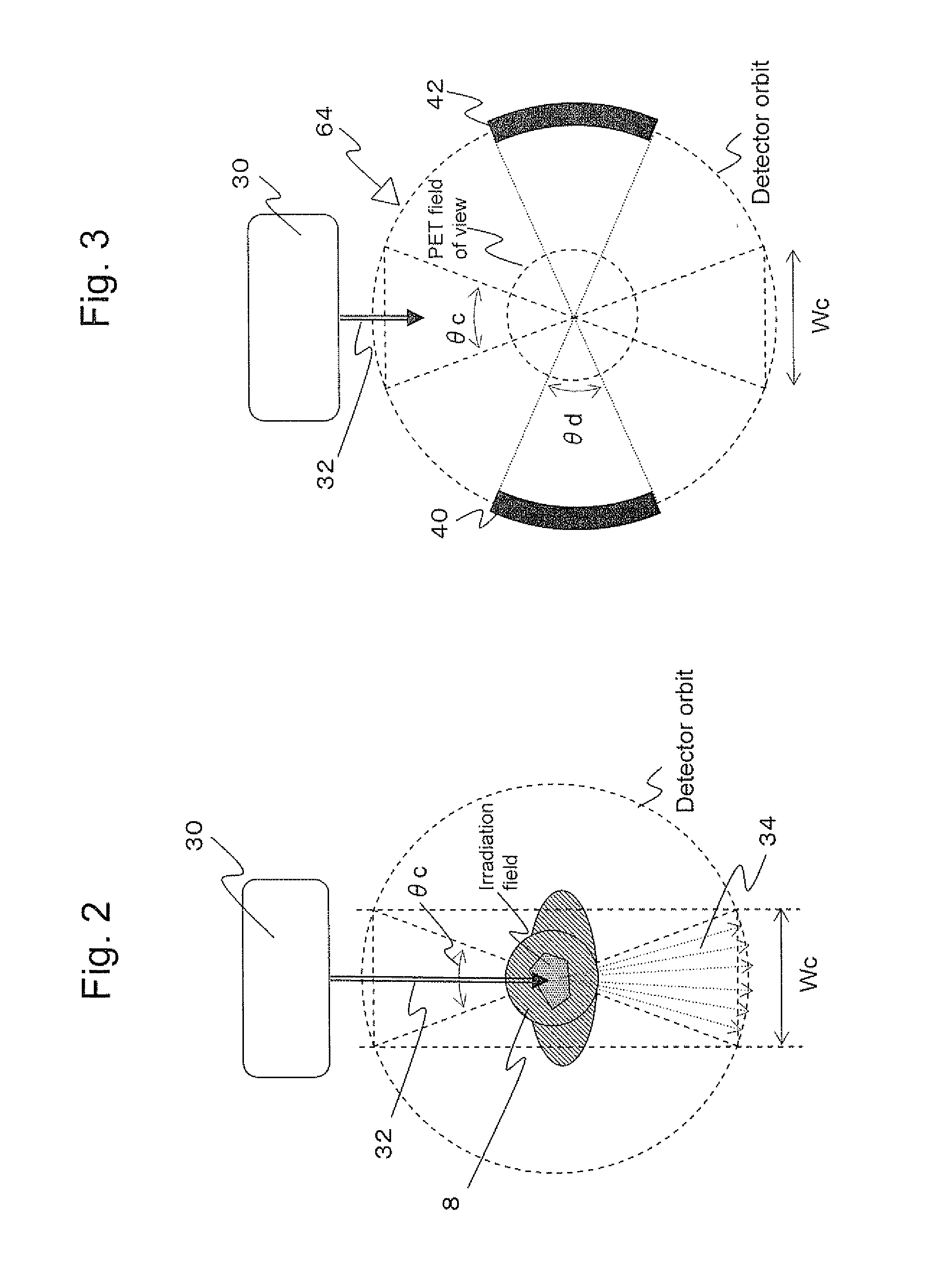Detector rotation type radiation therapy and imaging hybrid device
a hybrid device and detection device technology, applied in the field of radiation therapy and imaging hybrid devices, can solve the problems of difficult positioning of tumors, difficult to identify tumors themselves, and change in tumor size, and achieve the effect of reducing the incidence of nuclear fragments
- Summary
- Abstract
- Description
- Claims
- Application Information
AI Technical Summary
Benefits of technology
Problems solved by technology
Method used
Image
Examples
examples
[0079]The Heavy Ion Medical Accelerator in Chiba (HIMAC) of the National Institute of Radiological Sciences in Japan performs treatment beam control with a period of T=3.3 sec. The present invention will be described in terms of application to HIMAC. Assuming that the radius of the orbit of the detectors R=50 cm and the radius of the PET field of view r=20 cm, the lower limit of θd is θd≧47.2°. Table 1 shows upper limits of θd for different irradiation durations ti and different widths We of the critical region. ts=3.3−ti. No device is feasible if the upper limit falls below the lower limit (in the table, denoted as NA). For enhanced sensitivity of the PET device, it is actually desirable to employ the maximum value of θd.
TABLE 1Wc =Wc =Wc =Wc =Wc =20 cm30 cm40 cm50 cm60 cmti = 0.5 sec129.7°117.8°105.6°92.7°79.0°ti = 1.0 sec102.4°90.5°78.3°65.5°51.7°ti = 1.5 sec75.1°63.3°51.0°NANAti = 2.0 sec47.8°NANANANA
[0080]While the example has dealt with the case with a single irradiation port,...
PUM
 Login to View More
Login to View More Abstract
Description
Claims
Application Information
 Login to View More
Login to View More - R&D
- Intellectual Property
- Life Sciences
- Materials
- Tech Scout
- Unparalleled Data Quality
- Higher Quality Content
- 60% Fewer Hallucinations
Browse by: Latest US Patents, China's latest patents, Technical Efficacy Thesaurus, Application Domain, Technology Topic, Popular Technical Reports.
© 2025 PatSnap. All rights reserved.Legal|Privacy policy|Modern Slavery Act Transparency Statement|Sitemap|About US| Contact US: help@patsnap.com



